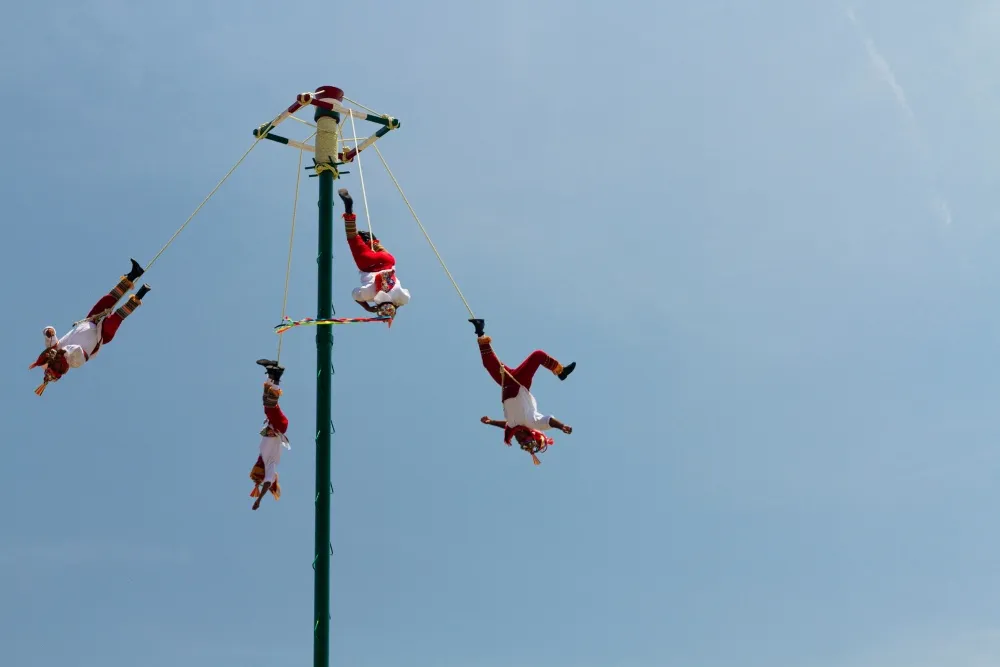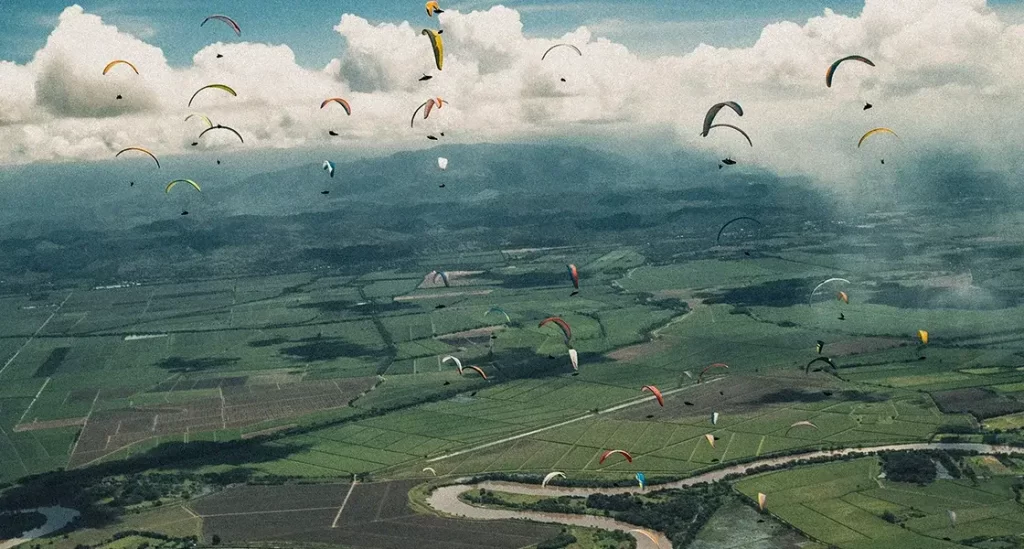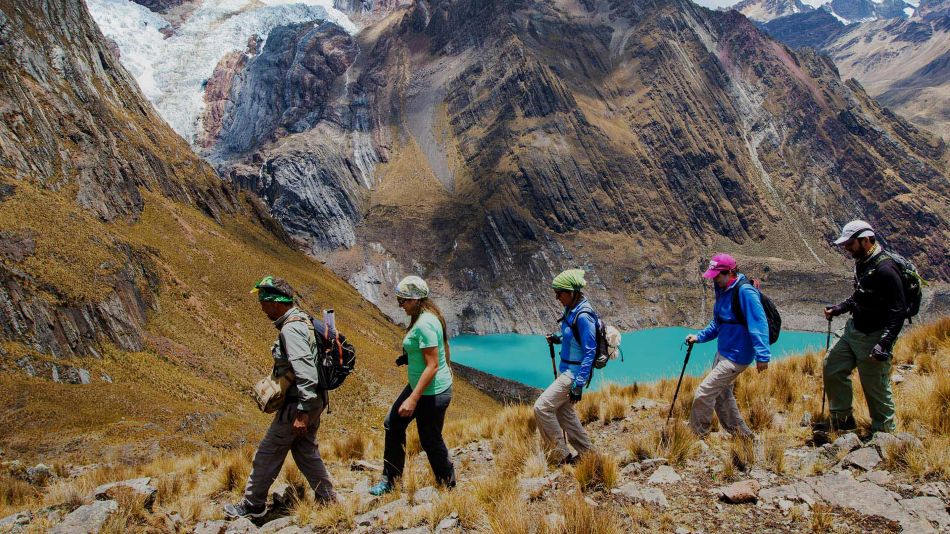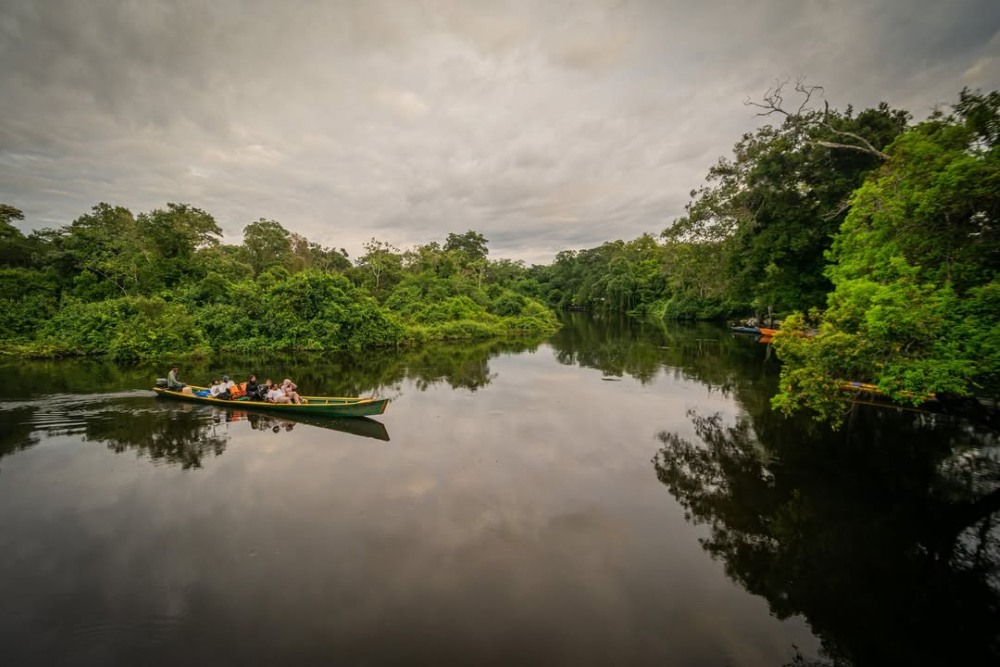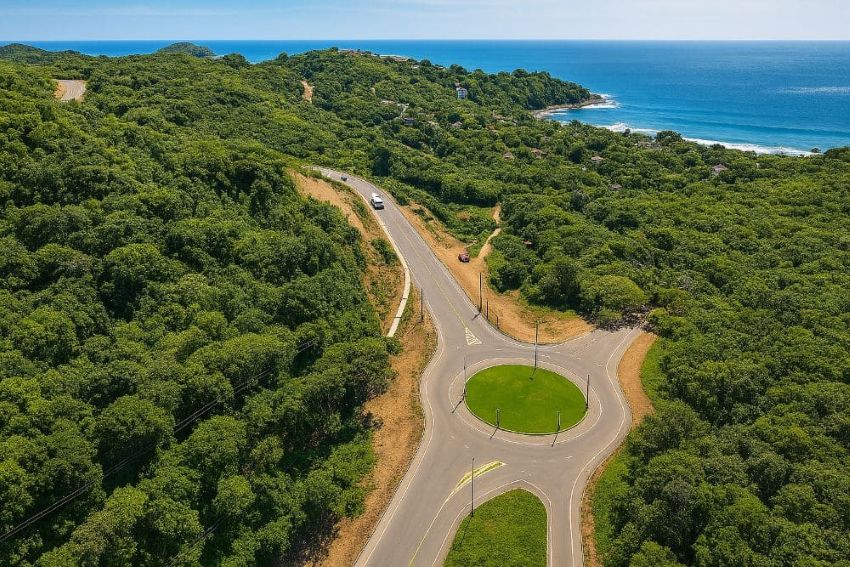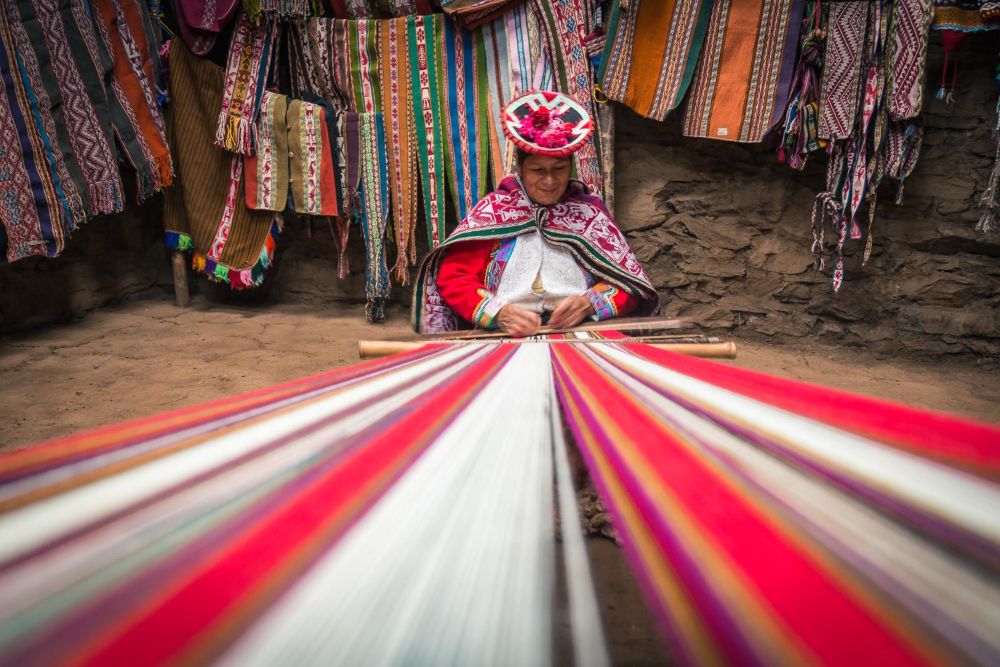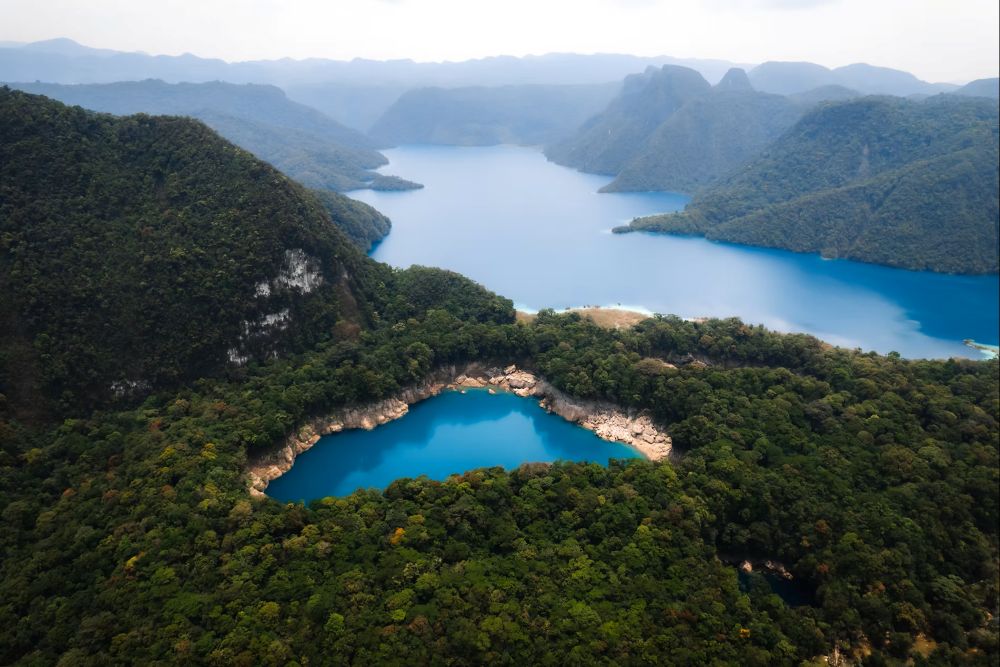Four men suspended in the air, slowly spinning to the sound of a flute and drum, like birds defying gravity. This is neither a circus act nor a display of gratuitous bravery—it is a sacred ritual. Watching the Papantla Flyers descend in spirals from the top of a 20-meter-high pole is to witness a ceremony that transcends time, beliefs, and generations. In the Mexican sky, it is a living story written by a people deeply rooted in memory.
A Prayer from the Earth
Legend traces the origin of this ritual to around the year 1300, long before the arrival of the Spanish. At that time, a severe drought was ravaging the Totonac region, in what is now the state of Veracruz. To appease the gods, an old sage is said to have instructed four young men to cut down the tallest tree in the forest. Their mission: raise the trunk toward the sky, lay their prayers upon it, and implore the return of rain and fertility.
Before being erected, the tree undergoes a ritual in which the men symbolically ask nature for permission. The pole then becomes an axis of the world, a bridge between the earthly and the divine.
A Symbolic Dance in Motion
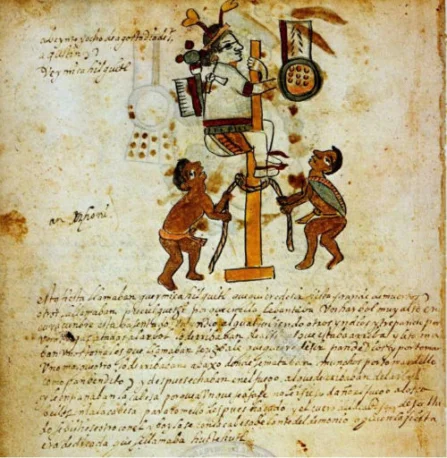
The Flyers, also known as “Birds of the Earth,” represent the four cardinal directions. As they leap into the void, each performs 13 rotations around the pole, for a total of 52—a highly symbolic number. It corresponds to the length of a complete Mesoamerican cycle, born of the convergence between two sacred calendars: the xiuhpohualli, a 365-day solar calendar, and the tonalpohualli, a 260-day ritual calendar. These calendars aligned every 52 years, marking a crucial moment in which the universe could either renew itself… or end.
At the top of the pole, the caporal remains in place. He does not fly, but plays the flute and drum, offering prayers to the gods. His music guides the sacred flight and sets the rhythm of the ceremony.
The costumes also speak: vibrant colors, feathered crowns, and embroidery inspired by the quetzal, a sacred bird. Nothing in this aerial dance is left to chance—every movement and every note carries meaning.
During the Spanish colonization, the ritual was banned, considered incompatible with Christian doctrine. Yet, away from watchful eyes, communities managed to protect, adapt, and pass it on—until centuries later, it could once again take place in broad daylight.
A Tradition That Endures and Inspires
“Despite the passage of time, our Totonac identity is still alive,” says Crisanto de León Salazar, a flyer for over 20 years.
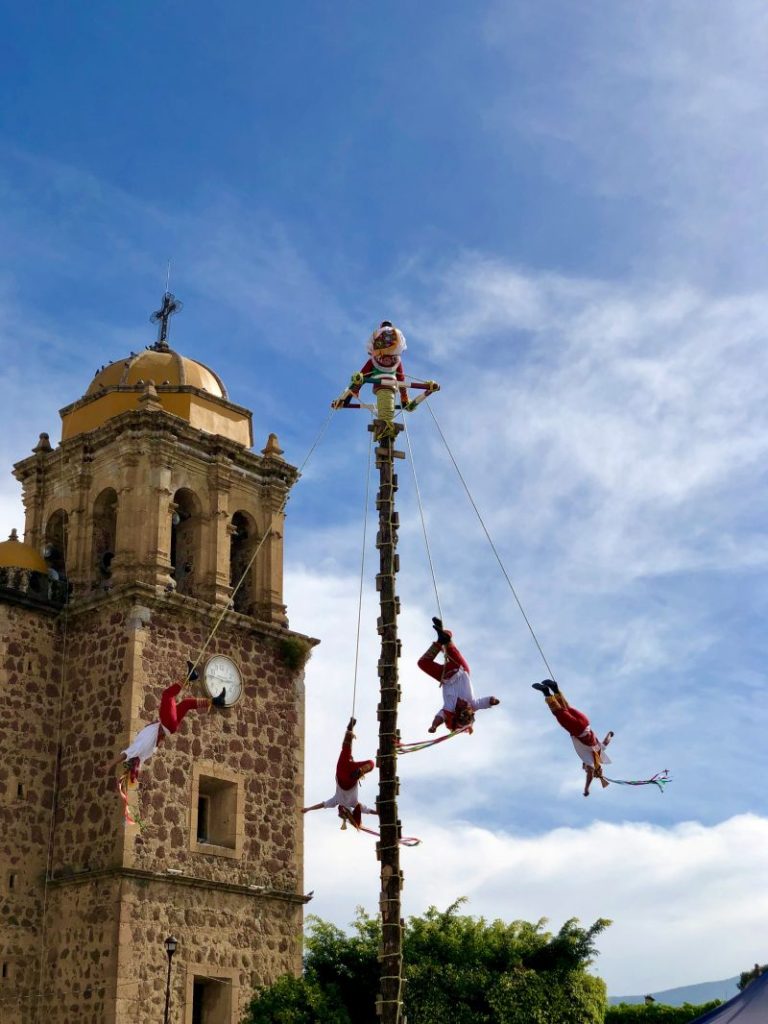
In 2009, UNESCO declared the ritual of the Papantla Flyers as Intangible Cultural Heritage of Humanity. This recognition honored the ancestral practice, while also underscoring the threats it faces: the decline of the Totonac language, rural exodus, the commodification of rituals for tourism, and the lack of generational renewal.
In response, dedicated schools have been established—especially in Papantla—where children not only learn the technique of flying, but also the worldview that gives meaning to each gesture and each note of the flute.
A Spiritual Experience, Not a Show
Attending the ceremony in its original setting—whether in Papantla or at the Cumbre Tajín Festival—is not just about watching an aerial performance. It’s an invitation to witness a sacred dialogue with nature, to grasp an ancient and still vibrant way of honoring the land, the life cycles, and collective memory.
Ceremonies are also held at Mexico City’s National Museum of Anthropology, where the performance is presented with educational purpose, aiming to preserve its symbolic value beyond the tourist gaze.
The Flyers do not seek to dazzle—they seek to transmit. They are the echo of an unbroken spirituality. The living memory of an Indigenous Mexico that, from the top of a ceremonial pole, continues to whisper the prayers of its ancestors to the sky.
Photos: D.R. | Daniel Romero

